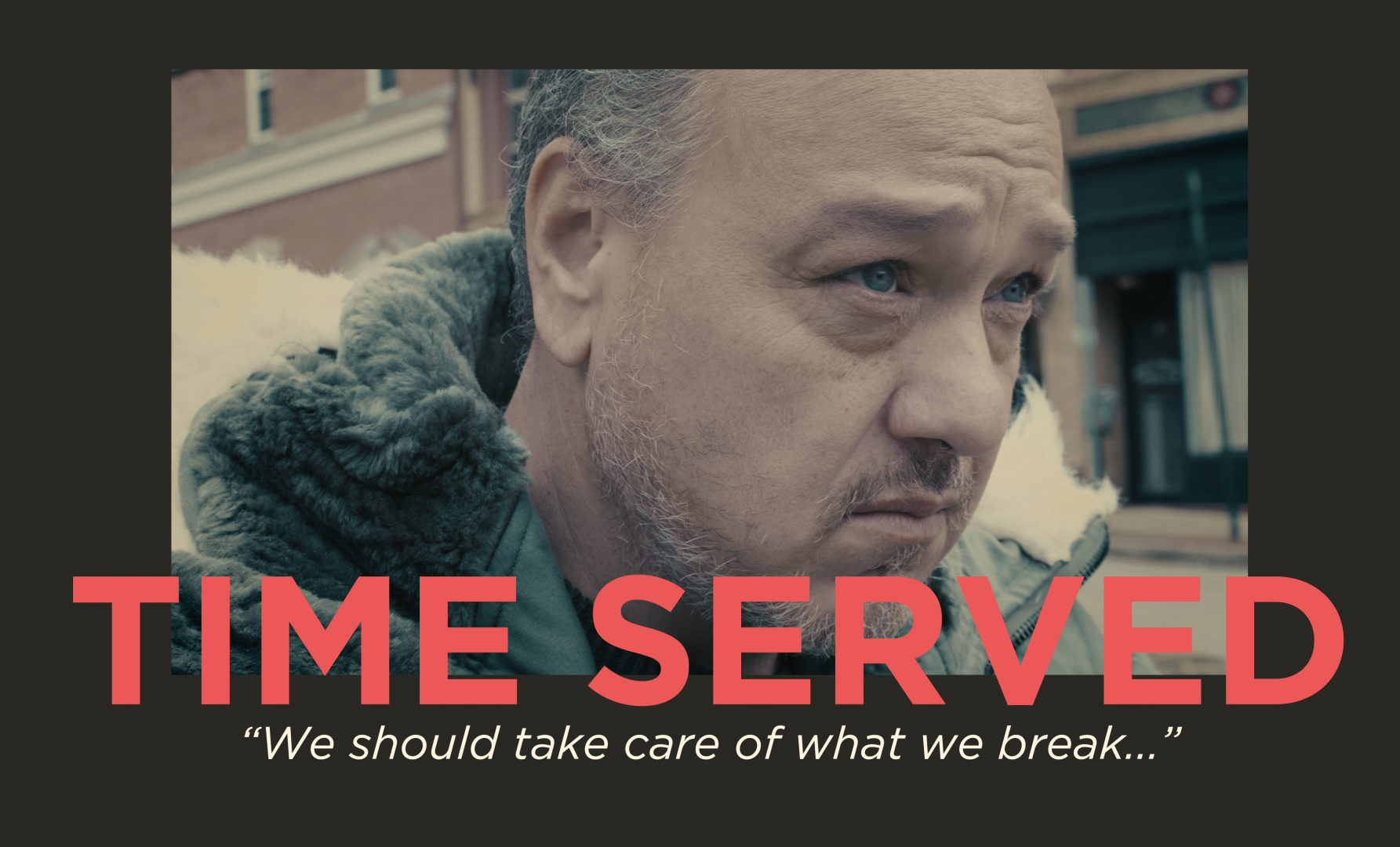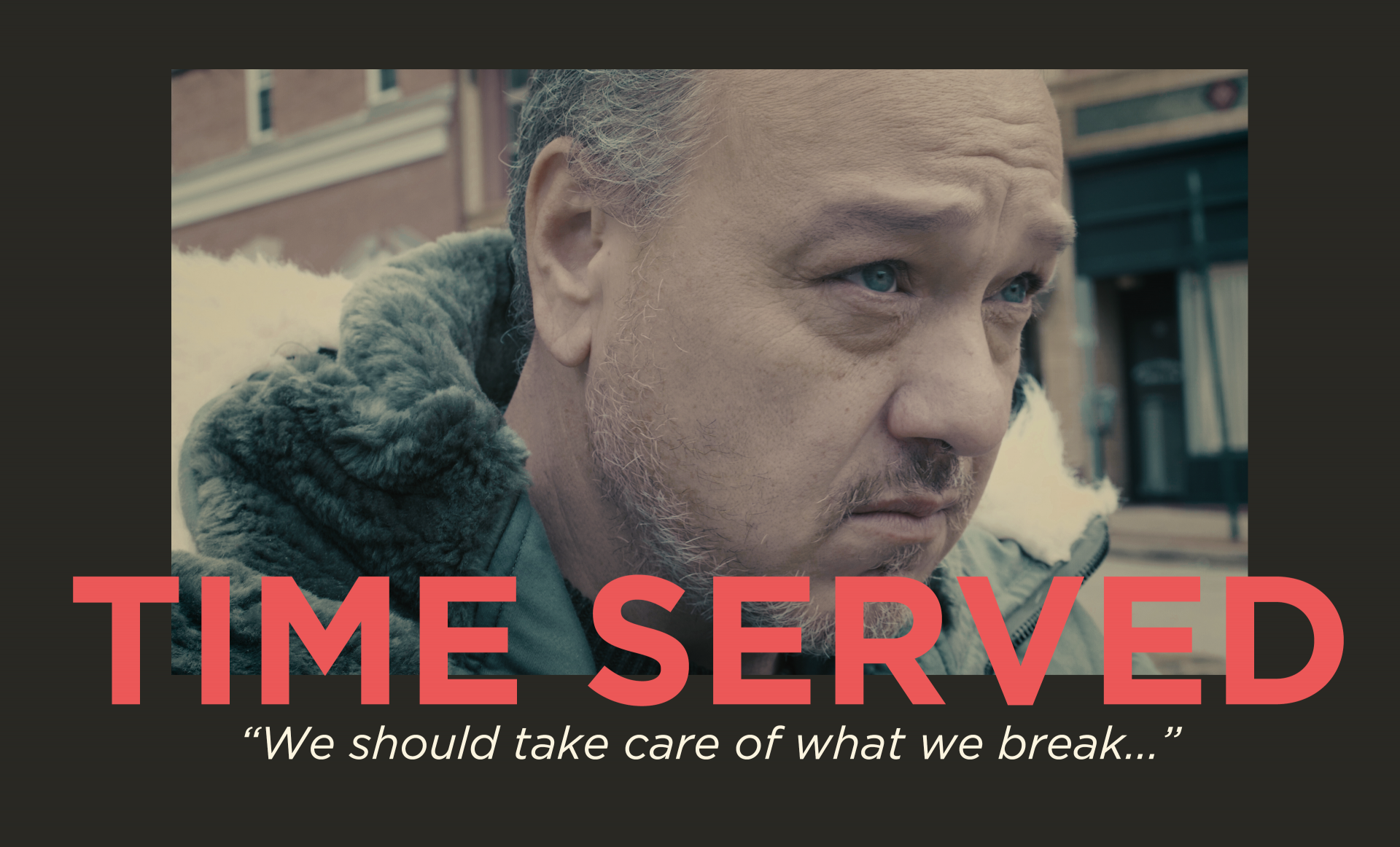
A PA Post / WITF Documentary looks at the two ways veterans come into contact with the criminal justice system, and what's being done to help them. (Joseph Darius Jaafari / PA Post)

A PA Post / WITF Documentary looks at the two ways veterans come into contact with the criminal justice system, and what's being done to help them. (Joseph Darius Jaafari / PA Post)

A PA Post / WITF Documentary looks at the two ways veterans come into contact with the criminal justice system, and what's being done to help them. (Joseph Darius Jaafari / PA Post)

A PA Post / WITF Documentary looks at the two ways veterans come into contact with the criminal justice system, and what’s being done to help them. (Joseph Darius Jaafari / PA Post)
I grew up appreciating military service. My mother was a captain in the U.S. Navy, stationed out of Bremerton, Washington. She continued her service as a nurse at the VA Hospital in Phoenix, before she eventually left to become a public school nurse. Her entire life she talked about the honor that came with serving her country.
But during her time at the VA Hospital, I have many memories of my mother also being frustrated with how veterans are treated. She tried to help men and women who had issues with drug usage and homelessness. Many of the vets she treated would cycle in and out of jail.
The total number of veterans incarcerated in the U.S. has gone down dramatically since the late 1970s, when close to a quarter of all inmates had served in the military. Jails had even higher numbers – nearly a third of all inmates were vets. That was also a time when military service was more common, thanks to an active draft program.
The Bureau of Justice Statistics estimated in 2015 — the most recent report — that there are 181,000 U.S. veterans incarcerated, about 8% of all people jailed, nationwide. The crimes are varied, of course, from misdemeanors to serious violent felonies. But the crimes almost mirror what we’re seeing from active duty service members tried in military courtsl: sex crimes, drug use and assaults being the three most common charges.
Many of those crimes can be triggered — and exacerbated — by alcoholism and drug use, which we’re seeing in more veterans of the wars in Iraq or Afghanistan. In some studies, as many as 50% of vets coming out of the service right now are experiencing some form of service-related trauma.
For the past decade, there’s been a movement to give veterans – especially those who suffer from service-related trauma – the opportunity to avoid incarceration when they run afoul of the criminal justice system. Instead of jail, these veterans get treatment and other services.
Treatment courts are nothing new. Intervention-based programs are borne out of the idea that offenders often are victims, themselves. Prostitution courts in New York City were inspired by research showing that many arrested for selling sex were victims of assault, abuse or drug-addiction. Drug courts came as a reaction to a drug epidemic that saw some users turn to crime to feed their addictions.
It took two to three decades for intervention based approaches like these to spread across the country. Veterans Treatment Courts, however, took off quickly, perhaps because it doesn’t take much political will to stand up a program for veterans compared to spending taxpayer money on sex workers or drug users.
Similar to drug courts, the veterans programs have a strict probation schedule, with consistent drug testing and counseling. Veterans work alongside other recovered veterans and also get the opportunity to utilize services provided for free through the U.S. Department of Veterans Affairs.
And on its face, the programs work. Some studies have shown that people who go through a veterans court have as high as a 90 percent success rate in not reoffending.
But not every veteran is eligible. It’s unclear how many people apply to veterans courts across the country. While at The Marshall Project, I gathered the acceptance rates at 35 different Veteran Treatment Courts and found that the majority of people who applied didn’t get in.
And that’s because these courts — as well-intentioned as they are — can be biased toward veterans who are first-time offenders or who committed minor crimes. Many of the veterans who are admitted to the programs are people who probably wouldn’t offend again, anyways.
The challenge, then, is getting these courts to take on clients who committed more serious crimes. Lisa Grayson, a former Judge Advocate General and the current Register of Wills in Cumberland County, once ran for judgeship on the platform that veterans treatment courts should take on clients who committed serious felonies. That message, she said, wasn’t very well received.
For veterans who wind up in prison, there are Veteran Service Units available, offering similar services but in a more restrictive setting.
For my latest documentary, I spent three months interviewing and following two veterans, one serving a sentence in state prison, and the other going through the Washington County Veterans Treatment Court. Officials operating both programs were reluctant — if not outright resistant — to granting access to me and my camera. As you will see, the end result is a rare glimpse at two different approaches to helping veterans in distress.
Please watch our short documentary, “Time Served,” and feel free to share it among your friends and social networks. And, as always, we welcome your thoughts in our Listening Post. —Joseph Darius Jaafari

Kate Landis / PA Post
The “ReOpen PA” protest outside the capitol in Harrisburg on Monday, April 20, 2020, featured numerous signs criticizing Gov. Tom Wolf’s actions to shut down much of Pennsylvania’s economy to contain the coronavirus epidemic. (Kate Landis / PA Post)
The U.S. Supreme Court yesterday said it won’t intervene now to reverse Gov. Tom Wolf’s emergency order shutting down much of Pennsylvania’s daily life. Marc Scaringi. “The court denied the request in a one-sentence order Wednesday afternoon. It must still decide whether it will hear the group’s appeal of a Pennsylvania Supreme Court decision that found state officials were within their authority to order the shutdown to prevent the spread of the coronavirus,” The Morning Call notes.
Some businesses around the state aren’t waiting for the courts. An Associated Press story looks at “fed-up business owners [who] are jumping the gun and have resumed serving customers in defiance of Gov. Tom Wolf’s shutdown order.” The piece quotes an Altoona gym owner: “We just decided to do it. We didn’t ask permission to do it. We just did it, and we’re going to keep doing it. Someone had to take a stand. Enough is enough.”
There’s a shutdown protest planned in Philadelphia tomorrow, and The Inquirer looks at who’s organizing it. That list includes a local chapter of the Proud Boys, self-described tough guys who support President Trump. The rally is scheduled for noon outside city hall.
U.S. Sen. Pat Toomey (R) convened a virtual hearing Wednesday to talk with experts, including UPMC’s Steven Shapiro, about the best approaches to reopening the nation’s economy. “Shapiro said UPMC’s data shows that a reopening is possible as long as there are special protections that remain in place for seniors and those with pre-existing conditions,” WTAE reports. “One thing is certain: Pandemics will be part of our future, and we must be better prepared. We can’t be put in a position to have to choose between death by pathogen or death by our economy,” Shapiro said. The whole hearing is on YouTube.
More on the Wolf beat:
PennLive’s John Baer: There are reasons Gov. Wolf’s red-yellow-green code draws questions
Spotlight PA: ‘I’m trying to be transparent,’ Wolf says as his administration rejects bill to restart public records law
Spotlight PA: Wolf says Pa. employees should refuse to go to work if they don’t feel safe, but some fear putting job at risk
WHYY: Gov. Tom Wolf announces New-Deal-esqe civilian corps to help with COVID-19 response
Must-reads:
The fabulous writer Michael Powell went to Hazleton, Pa., to look at how the coronavirus tore through the town’s working class. “Workers along these blocks, particularly those from Hazleton’s many factories and warehouses, faced a primal calculus. They could not leave jobs, even as co-workers fell sick and some brought the virus home with them,” Powell writes. Read the story in the New York Times: This Working Man Was Ready to Retire. But the Virus Took Him.
Over at PublicSource, reporter Oliver Morrison carefully explains why there’s a CDC model that assumes Pennsylvania’s death rate is more than 100% higher than reported. He writes: “This count above the norm would be among the highest for any state in the country, but PublicSource reporting shows that number is still quite uncertain and could be higher or lower. The reason: The CDC’s estimate is based on the number of deaths reported so far and how quickly the state normally reports its data — with that information, the CDC adds how many deaths it expects to be eventually reported. But the estimate could be skewed because the state hasn’t been reporting its data at the same pace as it has in the past.”
New York Times: How Kushner’s volunteer force led a fumbling hunt for medical supplies
The Washington Post: America’s coronavirus divide is reflected in two New Mexico mayors. One asked for a lockdown. The other defied orders (subscription required)
The Inquirer: Dead people are getting coronavirus stimulus checks. Do families have to send the money back? Maybe not.
The days of journalism’s one-way street of simply producing stories for the public have long been over. Now, it’s time to find better ways to interact with you and ensure we meet your high standards of what a credible media organization should be.